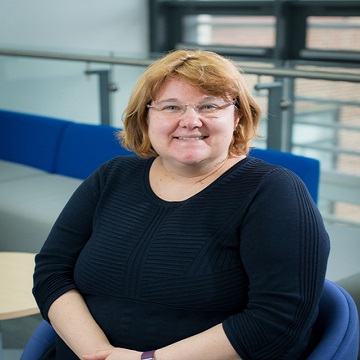Scientific Program
Keynote Session:
Title: Gene fusion resulting from chromosome recombination causes human cancers
Biography:
Jianhua Luo has been studying molecular mechanisms of human malignancies in the last 32 years. Currently, he is a Professor of Pathology and Director of High Throughput Genome Center at University of Pittsburgh. In the last 20 years, Dr. Luo has been largely focusing on the genetic and molecular mechanism of human prostate and hepatocellular carcinomas.
Abstract:
Chromosome mutations and rearrangements are some of the hallmarks of human malignancies. Chromosomal rearrangement is frequent in human cancers. One of the consequences of chromosomal rearrangement is gene fusions in the cancer genome. We have identified a panel of fusion genes in aggressive prostate cancers. In the present study, we found that these fusion genes are present in 7 different types of human malignancies with variable frequencies. Among them, CCNH-C5orf30 and TRMT11-GRIK2 gene fusions were found in breast cancer, colon cancer, non-small cell lung cancer, esophageal adenocarcinoma, glioblastoma multiforme, ovarian cancer and liver cancer, with frequencies ranging from 12.9% to 85%. In contrast, four other gene fusions (mTOR-TP53BP1, TMEM135-CCDC67, KDM4-AC011523.2 and LRRC59-FLJ60017) are less frequent. Both TRMT11-GRIK2 and CCNH-C5orf30 are also frequently present in lymph node metastatic cancer samples from the breast, colon and ovary. Thus, detecting these fusion transcripts may have significant biological and clinical implications in cancer patient management. One of these fusion genes called MAN2A1-FER generated a constitutively activated tyrosine protein kinase. The fusion translocates FER kinase from the cytoplasm to Golgi apparatus. The fusion protein ectopically phosphorylates the N-terminal domain of EGFR, and activates the EGFR signaling pathway in the absence of a ligand. MAN2A1-FER has been found in a variety of human malignancies. It transforms immortalized cell lines into highly aggressive cancer cells. Expression of MAN2A1-FER produces spontaneous liver cancer in animals. Cancer cells positive for MAN2A1-FER are highly sensitive to several tyrosine kinase inhibitors, and can be targeted by genome therapy intervention. Thus, targeting at MAN2A1-FER or other oncogenic fusion genes may hold promise to treat human cancer effectively.
Title: Effects of far-infrared & terahertz onnetsu therapy on various cancers, rheumatoid arthritis and other diseases
Biography:
Kazuko Tatsumura is graduated from Toho Academy of Music in Tokyo, as a pianist and composer, invited by the Boston Symphony, she came to the USA in 1961 as one of the first Japanese women. She then received Master of Art from New York University and finished her Phd credits in Philosophy in 1965. In 1967, Tatsumura then turned to an independent career and became the top International Classical and Cultural Impresario/producer. Until 1992, she produced an average of 2,000 cultural events each year, traveling to more than 140 countries. She was presented with numerous honors for her work from different countries, many for humanitarian causes. She is also well known as a philanthropist.
Abstract:
When Onnetsuki is slid over the skin, healthy areas are comfortable, but IF deep tissue is unhealthy or cold, degenerated, patient feels this spot to be ‘hot’. When this ‘hot spot’ is effectively treated with Onnetsu Therapy (Far-Infrared & Terahertz vibrations, and Heat), the hot sensation subsides and the Disease Conditions improve through vibrating water molecules of our deep tissue. Therefore, the Onnetsu Therapy is both a diagnostic and therapeutic.
Oral Session 1:
- Surgery | Chemotherapy | Hormonal Therapy | Suicide Gene Therapy
Title: A novel biomarker and a novel target for the immunotherapy of early stage ovarian cancer
Biography:
Barbara-ann Guinn is a Professor in the University of Hull, UK.
Abstract:
Ovarian cancer (OC) affects approximately 7000 women in the U.K. every year. It can occur at any age but is most common after menopause. Diagnosis at an early stage of disease greatly improves the chances of effective treatment however, diagnosis tends to be in the later stages of disease when patients present with pelvic or abdominal pain, urinary frequency or urgency, increased abdominal size or bloating. A diagnosis of OC is usually confirmed by a pelvic examination, transvaginal ultrasonography and detection of carbohydrate antigen 125 (CA125) in the tumour tissue. However, CA125 has proven to be non-specific with variable expression between patients, which appears to work better as part of a panel to improve specificity, sensitivity (




